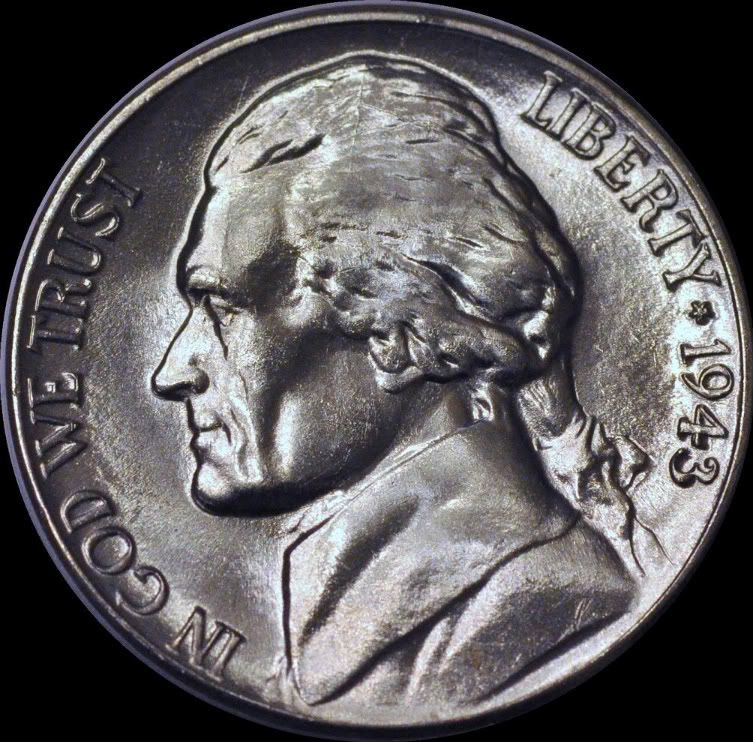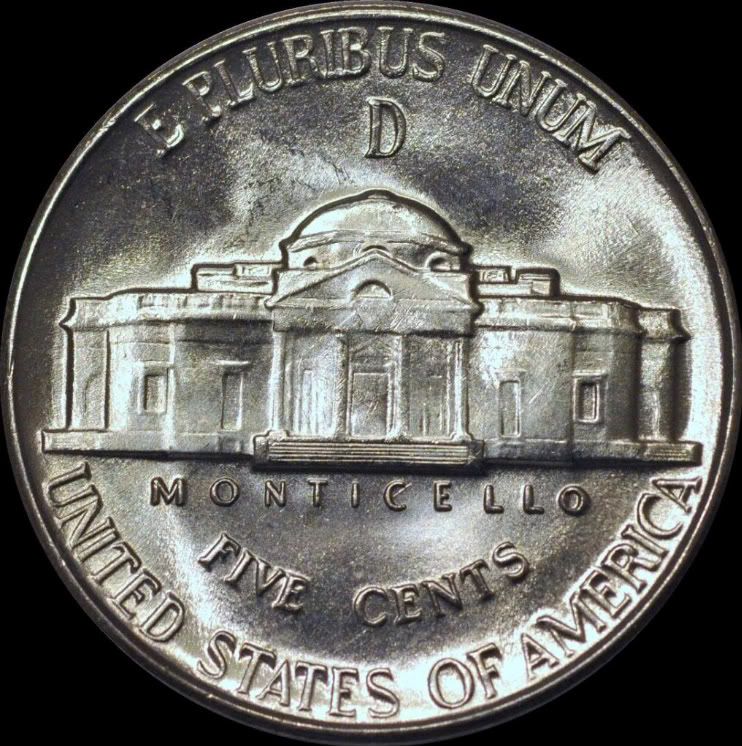Is it rare for FS Nickels to have die cracks?
 Marauderrt10
Posts: 1,097 ✭
Marauderrt10
Posts: 1,097 ✭
I was under the impression that die cracks were signs of the die weakening, is it rare for a nickel to have FS and die cracks?




0
Comments
A coin can be struck poorly with new dies as well as a coin
can be struck with a strong strike from well worn dies.
This can further the argument that to judge the strike on a Jeff using only
the FS designation can be tricky.
Try to explain this strike on my 95 Jeff?
edited to add --- this coin is Mint State
<< <i>I think you might also be confusing strike with wear.
A coin can be struck poorly with new dies as well as a coin
can be struck with a strong strike from well worn dies.
This can further the argument that to judge the strike on a Jeff using only
the FS designation can be tricky.
Try to explain this strike on my 95 Jeff?
edited to add --- this coin is Mint State
interesting. thanks for posting!
<< <i>I may get corrected later on, but I believe, at least on early US issues, that dies may have cracked during the annealing/preparation process, prior to being put into use.....of course, they may get more prominent with use ->fatigue. I don't know if this was solved with newer technology over the years, so I don't know if this applies to war time nickels or not. But it seems like there were problems at the mints during WWII, so die prep may have been one of them. >>
Good answer! Rarely have I seen die cracks on coins dated after the war nickels. The most recent that comes to mind is the 2003-P which has an interesting die crack along the jawline.
Post your after 1945 die cracks!
Leo
The more qualities observed in a coin, the more desirable that coin becomes!
My Jefferson Nickel Collection
<< <i>
<< <i>I may get corrected later on, but I believe, at least on early US issues, that dies may have cracked during the annealing/preparation process, prior to being put into use.....of course, they may get more prominent with use ->fatigue. I don't know if this was solved with newer technology over the years, so I don't know if this applies to war time nickels or not. But it seems like there were problems at the mints during WWII, so die prep may have been one of them. >>
Good answer! Rarely have I seen die cracks on coins dated after the war nickels. The most recent that comes to mind is the 2003-P which has an interesting die crack along the jawline.
Post your after 1945 die cracks!
Leo >>
Hey Leo,
Die cracks are VERY prevalent on the earlier Zincolns.
Take a look at the reverse of an 83 for example. Hard to find them without multiple cracks. I remember looking through about 100 rolls for the 83 DDR and saw so many with multiple cracks that I started to put any I found with 4 or more cracks aside. Well after I put about 3-4 hundred aside I stopped and through them back in the pile.
<< <i>I was under the impression that die cracks were signs of the die weakening, is it rare for a nickel to have FS and die cracks? >>
You can still have a full strike from an eroded or weakened die. It just isn't as nice as when the coin has a full strike from a fresh die.
<< <i>I think you might also be confusing strike with wear.
A coin can be struck poorly with new dies as well as a coin
can be struck with a strong strike from well worn dies.
This can further the argument that to judge the strike on a Jeff using only
the FS designation can be tricky.
Try to explain this strike on my 95 Jeff?
edited to add --- this coin is Mint State
Isn't it struck through grease or some other substance?
<< <i>
<< <i>I was under the impression that die cracks were signs of the die weakening, is it rare for a nickel to have FS and die cracks? >>
You can still have a full strike from an eroded or weakened die. It just isn't as nice as when the coin has a full strike from a fresh die. >>
You can still have an "as strike" coin from an eroded or weakened die. It just isn't as nice as when the coin has an "as strike" coin from fresh die. aleaviate
Don't you know? The "full strike" quality was eliminated from the Grading Standards, most likely to close some loop-holes, very similar to the removal of the RD red toning designations for copper coins, to alleviate the number of coins returned on the grade guarantee. I suspect we'll see other similar decisions made, for example, the attributes of FS. FBL, FH and other designations could be eliminated. Because collectors should be making those choices about the quality of coins they collect, not from a TPGS opinion.
Leo
The more qualities observed in a coin, the more desirable that coin becomes!
My Jefferson Nickel Collection
<< <i>
<< <i>I think you might also be confusing strike with wear.
A coin can be struck poorly with new dies as well as a coin
can be struck with a strong strike from well worn dies.
This can further the argument that to judge the strike on a Jeff using only
the FS designation can be tricky.
Try to explain this strike on my 95 Jeff?
edited to add --- this coin is Mint State
Isn't it struck through grease or some other substance? >>
Looks that way to me, grease
Currency - 1928-1929-1934 Series Stars All Denom. - 126 of ~846
Lincoln Cent Varieties
Baseball cards: Kirby Puckett
Second Edition is more useful....
It has more info than first edition....
<< <i>Nice coin and good pic. MS67FS? >>
yes
Hoard the keys.
That said, the step detail is much more dependent on the quality of the strike vs the stage of the die. The steps are actually one of the last areas on a nickel reverse die to show die fatigue, because there is little metal flow there under normal operation (hence the scarcity of full step nickels). I have seen coins with what could only be termed a terminal die state and excellent step detail.
Finally, the 1995-P nickel posted elsewhere on the thread appears to be struck from a grease-filled reverse die. I would expect the step detail to be better on such a coin simply because there are that many fewer places for the metal to go under striking pressure.
Sean Reynolds
"Keep in mind that most of what passes as numismatic information is no more than tested opinion at best, and marketing blather at worst. However, I try to choose my words carefully, since I know that you guys are always watching." - Joe O'Connor
The 95P is a struck through grease example.
The reason I posted it was to try to show that you can not just look at the FS designation on a Jeff and let that be the judge of a fully struck coin or a new vs fatigued die.
<< <i>Hey guys.
The 95P is a struck through grease example.
The reason I posted it was to try to show that you can not just look at the FS designation on a Jeff and let that be the judge of a fully struck coin or a new vs fatigued die. >>
Well, I think there are about 13 definitions to what "fully struck means these days. So.....likely the reason for that deafening sound you heard when your post hit the bottom of the bucket.
Leo
The more qualities observed in a coin, the more desirable that coin becomes!
My Jefferson Nickel Collection